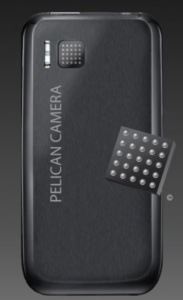Special module promises better pictures and subsequent focusing
The start-up Pelican Imaging http://pelicanimaging.com has presented a prototype that will revolutionize cell phone photography. Instead of going on a megapixel hunt with a single large image sensor, the company relies on an arrangement of five by five microlenses. With the help of special software algorithms for image reconstruction, this promises better recordings than are possible with conventional cell phone cameras. Among other things, it is possible to focus photos after they have been taken.

Cell phone camera future: micro lens array instead of large image sensor (Photo: Pelican Imaging)
Arithmetic is the key
Camera modules for cell phones offer ever higher resolutions. Sony plans to deliver samples of a 16,41 megapixel sensor this quarter. Pelican is now consciously taking a different approach, which should bring more advantages than a pure megapixel hunt. "We're changing how the camera captures light and we're enabling the modules to collect a lot more raw data. You can do a lot with the data processed by our software," company CEO Aman Jabbi told GigaOm.
Pelican doesn't just want to create the thinnest high-resolution camera module for smartphones and tablets. The image quality of photos and videos should benefit from the 25-microlens array approach, not least in poor lighting conditions. According to the company, the technology also provides 3D depth information and enables better implementation of applications such as gesture control. The system also promises users the ability to manipulate the image after it has been captured.
Light field
From a technical point of view, the Pelican module is apparently a compact implementation of a plenoptic or light field camera. Such systems do not simply provide a two-dimensional image of a scene, but also provide directional information. This technology has so far not been widespread in the area of larger digital cameras either, although the company Raytrix, for example http://www.raytrix.de already offers commercial models.
However, it remains to be seen when end customers will hold smartphones or tablets with a compact Pelican module in their hands for the first time. The company has not yet announced when the modules will be available to device manufacturers. As far as the price is concerned, the start-up is also covered, although it speaks of a cost-effective solution.
(ck)
.

